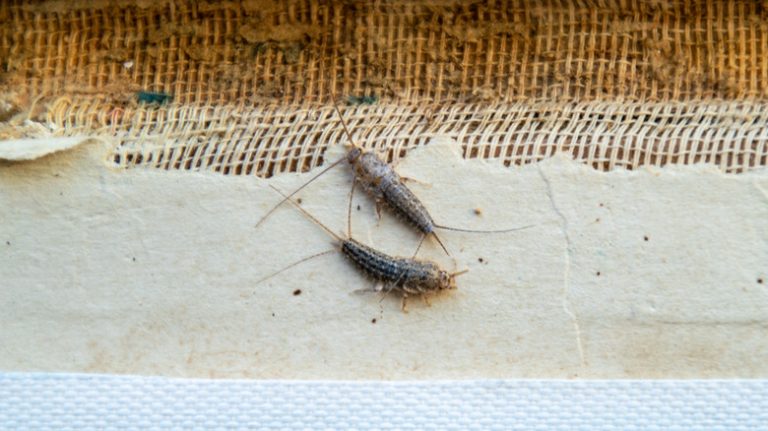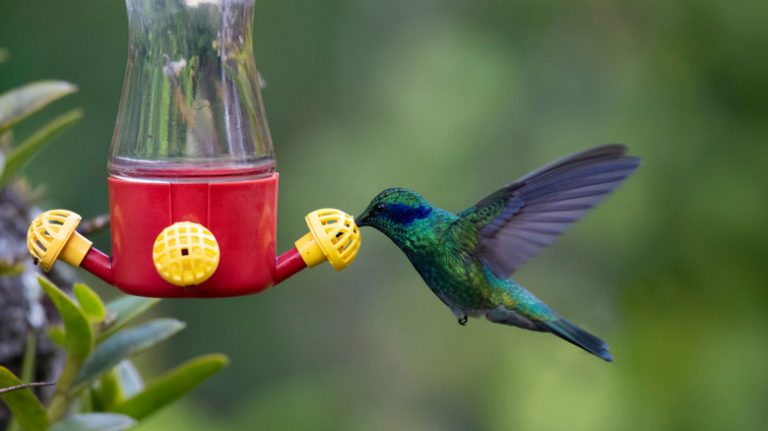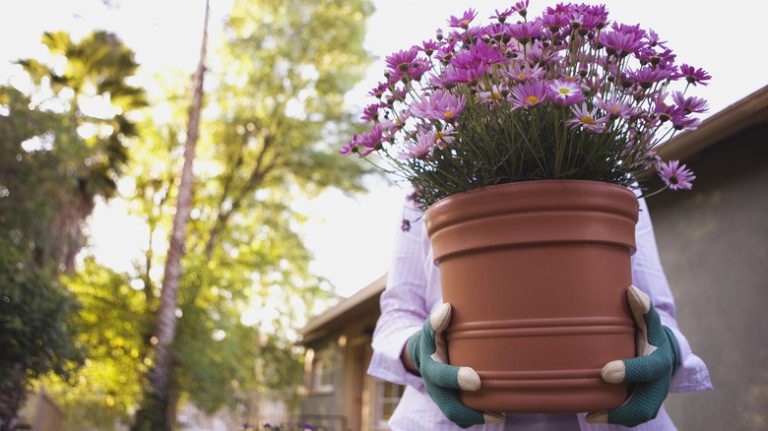The insects in your garden’s rich soil are dinner bells to carnivorous moles. Although these critters don’t munch on your plants, the tunnels they dig when trying to grab a worm can uproot your foliage and damage your garden. You’ll know these subterranean animals are present underneath your yard if you see the mounds of dirt they leave behind around your property. However, there is a low-maintenance and natural way to stop these diggers from returning. You just need to do some gardening to get rid of the moles in your backyard, as they despise certain herbs and flowers that have an unpleasant fragrance or that contain toxins.
Planting various mole-repelling plants around your garden or yard is the best way to fortify your space against these underground animals. Because they have tiny eyes and poor eyesight, these mammals heavily rely on their sense of smell to move around. They are sensitive to certain pungent smells that may be lovely perfumes or delicious scents to us. After planting some of these species, you’ll have a beautiful garden with colorful, fragrant flora and no moles.
Mint (Mentha)
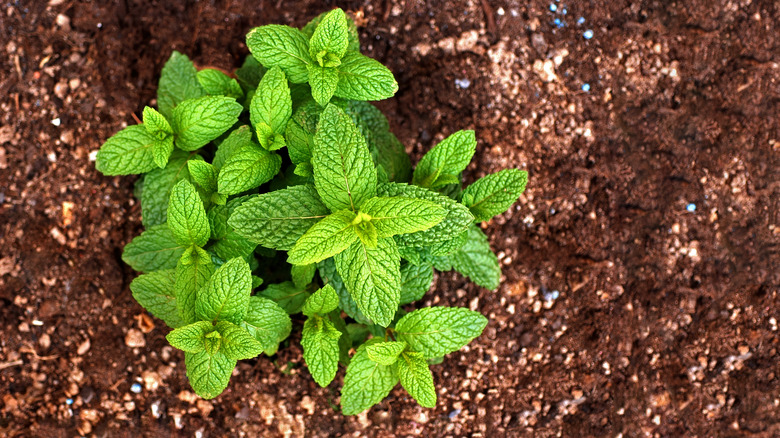
Mint has a fresh scent that’s pleasant to us but not to moles, so planting this herb in your garden will keep the underground critters at bay. Sprinkling crushed leaves around the yard can also increase the mint’s effectiveness. Fortunately, this plant is low maintenance, easy to grow, and thrives in USDA hardiness zones 3 to 8. It flourishes in full sun to part shade with well-drained soil and 1 to 2 inches of water weekly. Popular varieties include spearmint, peppermint, and apple mint. However, according to the ASPCA, mint is toxic to pets, so be cautious.
Marigold (Tagetes)
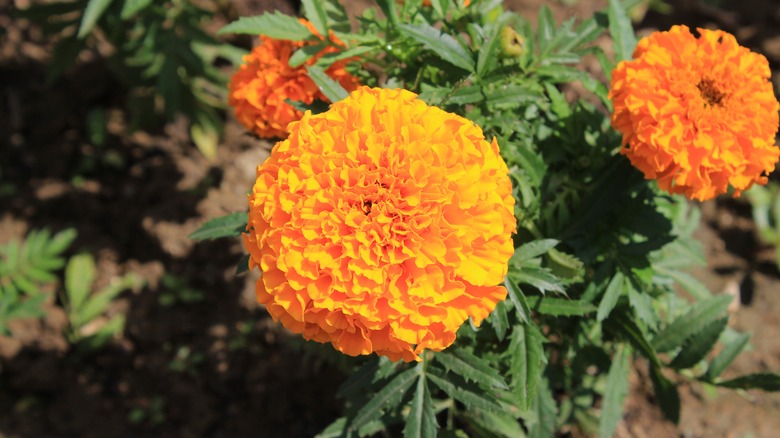
Marigold blooms have vibrant orange and red petals, which are reason enough to want to add them to your landscape. However, the blooms’ mole-warding capabilities are another positive benefit. This flower’s pungent fragrance stops moles in their tracks. Further, the roots release a chemical called alpha-terthienyl that’s toxic to some insects, which will reduce the moles’ food source, thereby keeping them away. Hardiness zones 2 to 11 are where they grow best. Full sun and neutral soil are all you need to get your flowers going, and let the soil dry between weekly waterings, since marigolds are tolerant to drought.
Daffodil (Narcissus)
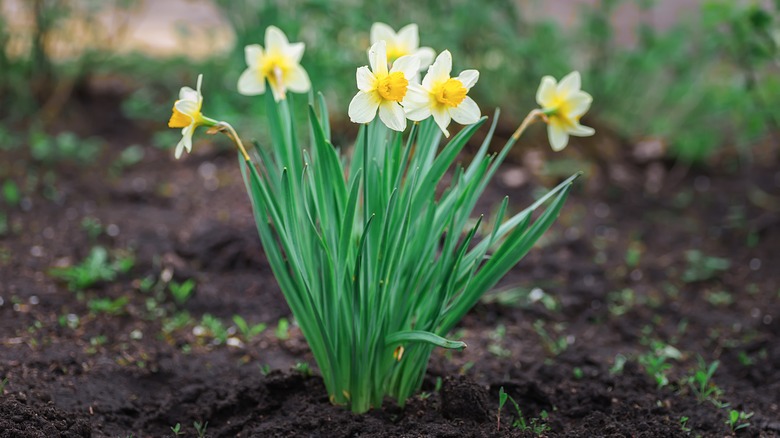
BushAlex/Shutterstock
Daffodils are toxic to moles, as their bulbs are poisonous, so the tunneling creatures avoid them. Planting a daffodil border is a great way to spice up the color of your garden and attract pollinators like butterflies while shutting out the moles. These flowers are hardy in zones 3 to 8, favor full sun, and need well-drained soil. With proper care, they will return every year, so you’ll have mole protection season after season. However, just as these flowers and bulbs are poisonous to moles, they’re also toxic for pets (per the ASPCA), so keep your furry friends away.
Castor bean (Ricinus communis)
Rpferreira/Getty Images
Castor beans are the plant that’s responsible for providing us with castor oil. The oil is a common ingredient in mole repellents, and the plant itself is a deterrent too. Around six hours of direct sunlight will lead to flourishing castor bean leaves. Once mature, it becomes drought-tolerant, but ensure its rich soil is evenly moist. This mole-repellent plant thrives in hardiness zones 9 to 11. However, keep in mind that the castor bean plant is very poisonous, so it is not the best option if your household has pets or children, per the ASPCA.
Dill (Anethum graveolens)
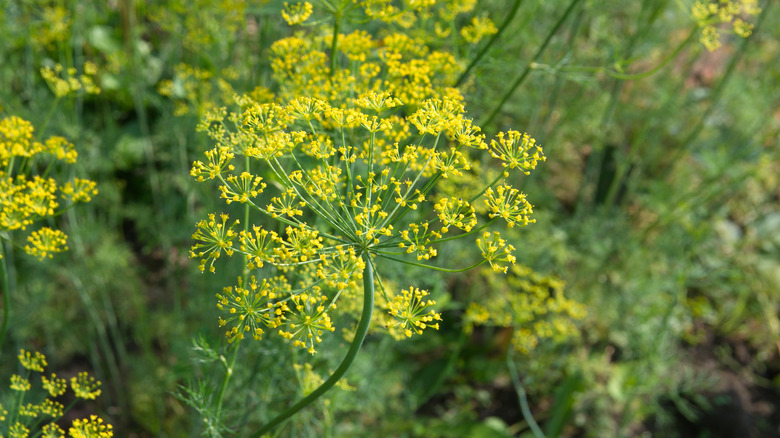
aniana/Shutterstock
Another herb that’s stellar for both cooking and fending off moles is dill. Its aroma is unpleasant to the subterranean mammals, making it a great plant to line your yard with. USDA hardiness zones 2 to 11 are recommended for this fragrant herb. The more sun your dill receives, the better, but it requires at least six hours of direct sunlight. Well-drained acidic soil is ideal, but this plant can survive in poor soil conditions as well. Once it matures, the dill only needs 1 inch of water per week.
Fennel (Foeniculum vulgare)
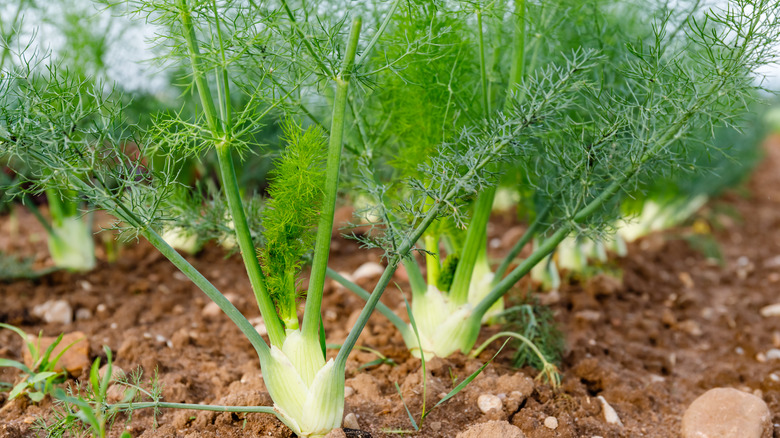
nnattalli/Shutterstock
Fennel is toxic to moles thanks to a compound called anethole. The toxins disorient the garden pests, and its sweet fragrance sends them further away, making it an excellent natural repellent. Plant the perennial in rich, well-drained soil and an area with lots of sunlight. It does best in USDA hardiness zones 4 to 9. Fennel is low-maintenance and one of many herbs that are perfect for growing in your backyard garden, as it tolerates both light frost and drought.
Glory lily (Gloriosa Lilies)
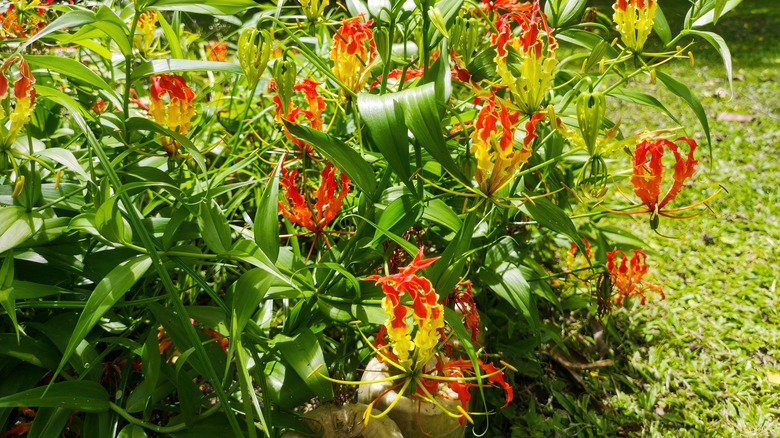
DragonWen/Shutterstock
Moles don’t like the scent of glory lilies, but you’ll love the pretty sights of this flower’s vibrant curly petals. Deer, rabbits, and squirrels also avoid this spring bloom, making it a stellar choice if your yard is prone to critters. For hardiness zones 8 to 10, plant your glory lily in rich, well-drained soil, keeping it moist. Full sun is ideal, but this flower also thrives in partial shade. Remember to wear gloves when handling the glory lily, as the plant is toxic to humans. The Pet Poison Helpline says that all parts of this plant are also toxic to animals, so keep your pets away.
Caper spurge (Euphorbia lathyris)
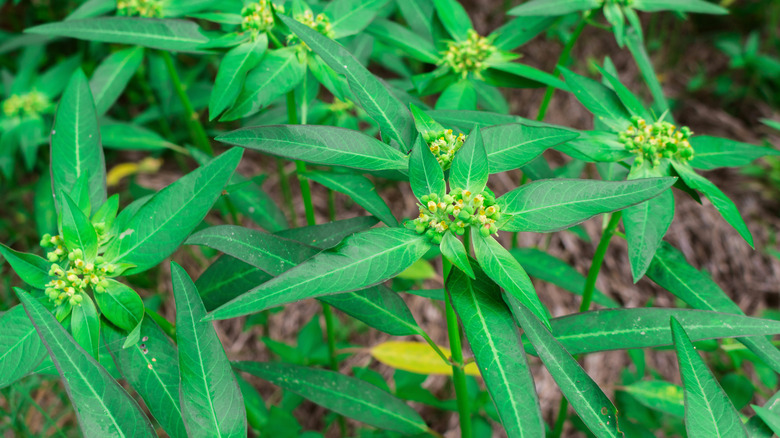
Zulashai/Shutterstock
Caper spurge, also known as the mole plant, is poisonous. It oozes a toxic sap that repels moles and is harmful to humans and pets, per Wag!. You’ll want to wear protective gear when handling this species and keep it far away from children and pets. This plant grows quickly, so it will take some upkeep to stop it from conquering your entire garden. Apart from its lethal properties, caper spurge is hardy in zones 5 to 9, likes dry, well-drained soil, grows in partial to full sun, and sprouts green-yellow flowers in the late spring or early summer.
Ornamental onion (Allium)
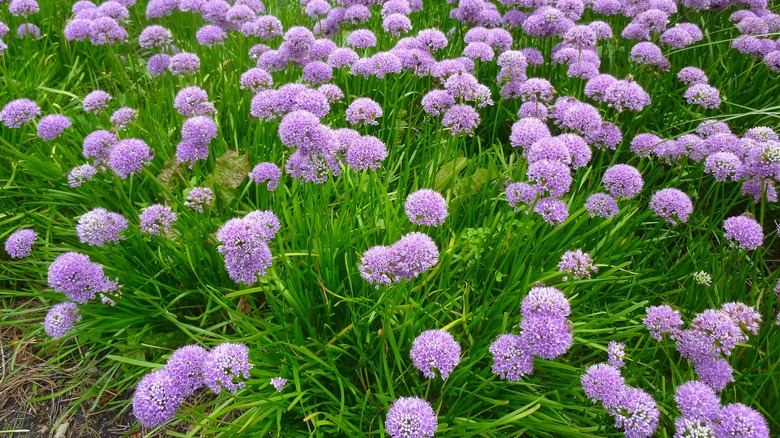
Gabriela Beres/Shutterstock
Ornamental onion is another flower moles can’t stand the smell of. These blooms are related to the culinary onion and garlic species, which moles would also rather not sniff. Adding these perennials to your garden will sprout gorgeous globes of colorful petals. Hardiness zones 3 to 9 are where ornamental onions thrive, and they do best in full sun and well-drained soil. Plant them near your garden’s edge and watch them keep the burrowing critters away. According to the Pet Poison Helpline, every type of allium is toxic to pets, so be cautious.
Crown imperial (Fritillaria imperialis)
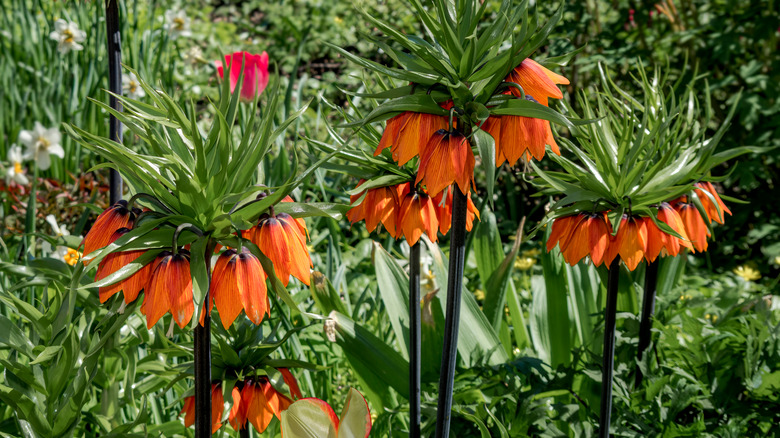
Nick Pecker/Shutterstock
Crown imperial is a stunning plant with a musky scent that keeps garden pests away, including moles. These grand, bell-shaped flowers sprout from stems that reach up to 3 feet tall. They are hardy in zones 5 to 9 and prefer full sun. Crown imperial’s bulbs are prone to rotting when exposed to too much water, so placing them in well-drained soil is key. Enjoy their warm shades of orange and red petals while they keep your garden mole-free. The Gardening Channel says that this plant is toxic for both humans and pets, so ensure your family is safe around this flower.
